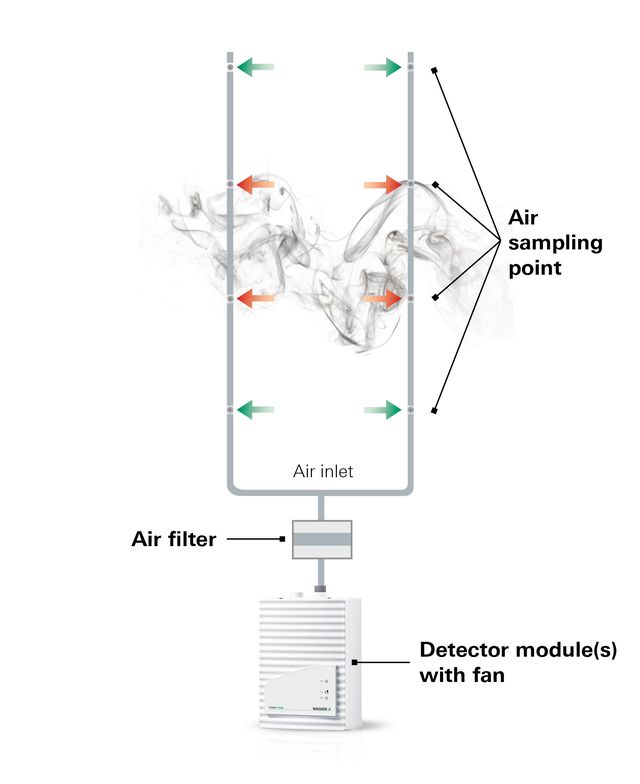Functional principle of air sampling smoke detectors

The air sampling smoke detector actively takes continuous air samples from the ambient air through air sampling points in a pipeline system and routes these samples into the detection unit. In this case, each air sampling point replaces a point-type smoke detector.
The vacuum needed to take the air sample is produced by a fan. This function is performed by an air flow sensor system which continuously monitors the pipe system for breakage and stoppage.
The air sucked in is analysed in the detection chamber to detect whether it contains particles of smoke.
Increased immunity to false alarms for modern air sampling smoke detectors: Filters installed before the detector modules prevent any dust which has been sucked into the pipe system from getting into the detector module and being incorrectly registered as smoke there. If there are particles of smoke in the air, the signals which this triggers will be compared with pre-registered smoke development patterns. An alarm will be triggered if a smoke development pattern is detected.